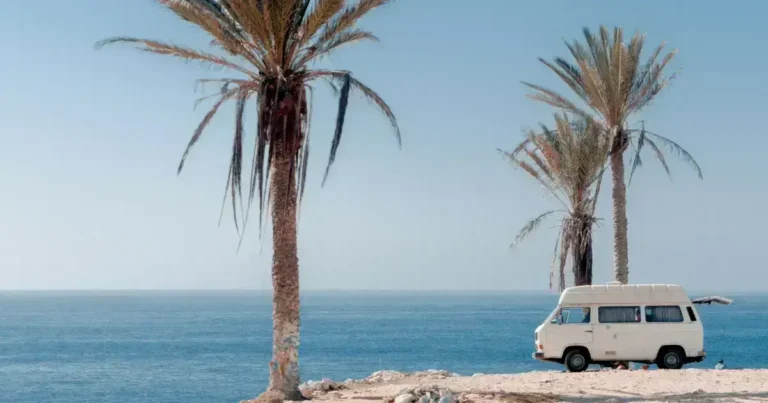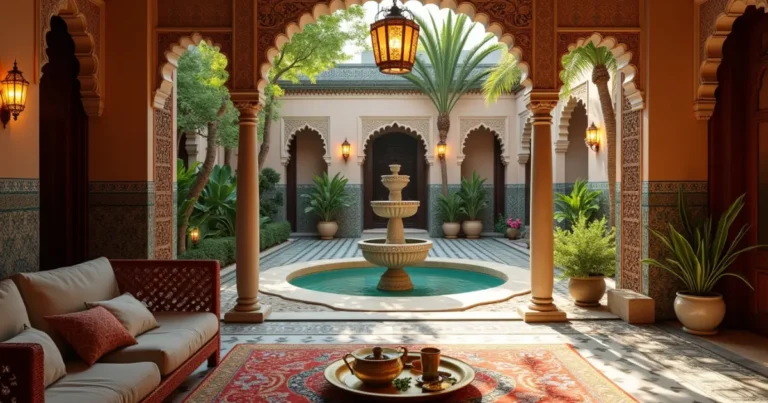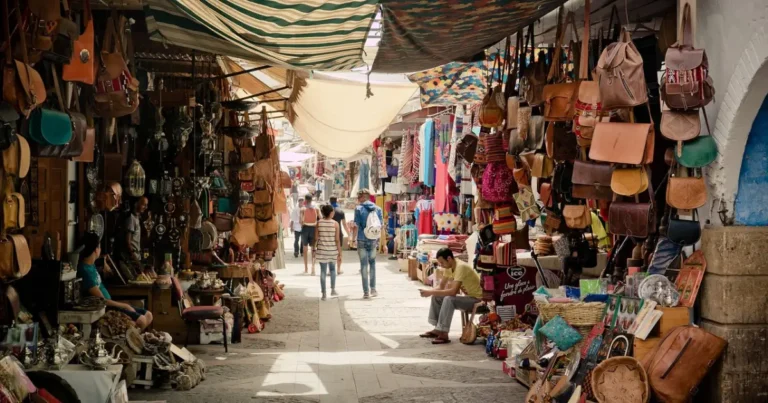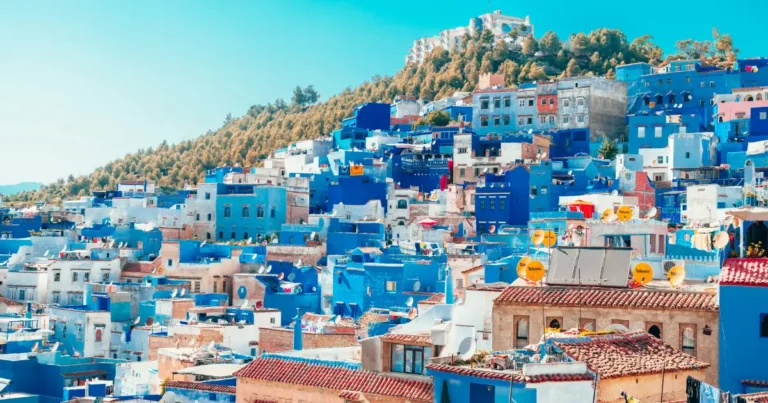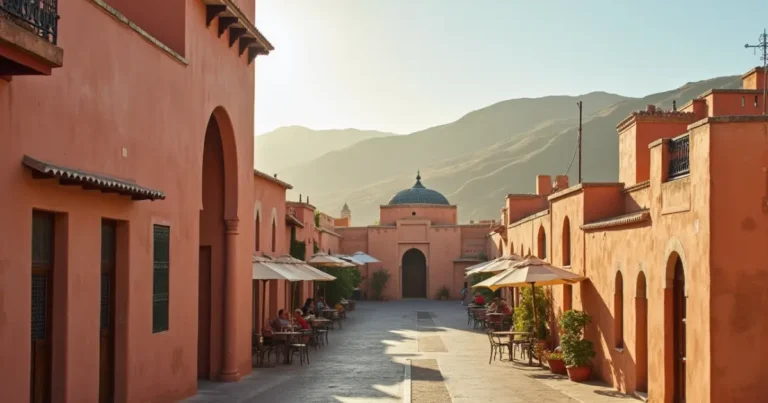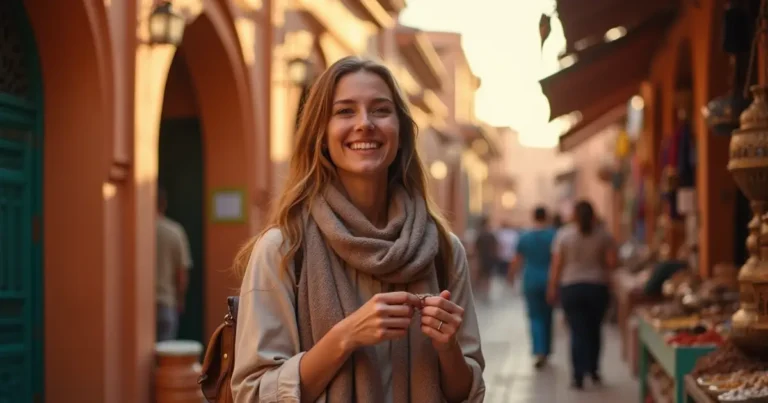The Ultimate Guide to Visiting Morocco
Table of Contents
Guide to Visiting Morocco: Tips for Your Dream Vacation
Introduction
Morocco is a country that effortlessly blends vibrant culture, stunning landscapes, and a rich history that will leave you enchanted. Whether you dream of wandering through the bustling souks of Marrakech or gazing at the endless dunes of the Sahara, this guide will help you navigate your Moroccan adventure with ease. So grab your travel diary and let’s dive into the essential tips for making the most of your dream vacation in Morocco!
Ultimate Guide to Visiting Morocco – Travel Preparations
2.1 Best Time to Visit Morocco
The best seasons to visit Morocco are spring (March to May) and fall (September to November). During these seasons, temperatures are pleasant, ranging from the mid-60s to mid-80s °F (18 to 30 °C), making it perfect for both sightseeing and outdoor adventures.
Summer can be scorching, especially in the desert – think highs of 100 °F (38 °C) – so plan accordingly if you decide to visit during that time. Conversely, winter (December to February) can be chilly, particularly in the mountains and northern regions, so layers are your best friend!
2.2 Essential Travel Documents
Before you embark on your Moroccan journey, ensure you have the following documents handy:
- Passport: Ensure it remains valid for at least six months after your arrival date.
- Visa: Many travelers from Europe, the U.S., Canada, and Australia do not need a visa for stays up to 90 days. However, always check the latest requirements based on your nationality.
- Travel Insurance: It’s wise to have coverage for health emergencies, trip cancellations, and personal belongings.
2.3 Packing Tips for Morocco
Packing for Morocco can be exciting! Here are some essentials:
- Appropriate Clothing: Light, breathable fabrics are ideal for warm weather, while layers will keep you comfortable when temperatures dip at night. Women might consider packing a scarf or shawl for covering shoulders when visiting religious sites.
- Comfortable Shoes: You’ll do plenty of walking, so bring shoes that can handle cobblestone streets and sandy terrains.
- Travel Adapter: Morocco uses type C and type E plugs, so bring a universal adapter for your electronics.
Navigating Morocco– The Ultimate Guide to Visiting Morocco: Tips for Your Dream Vacation
3.1 Transportation Options
Getting around Morocco can be a mix of experiences! Here are your best options:
- Public Buses: CTM and Supratours buses are comfortable and cover most major cities.
- Trains: The national railway is efficient for traveling between cities like Casablanca, Marrakech, and Fes.
- Taxis: Local taxis are generally safe, but always agree on the fare beforehand or ask the driver to use the meter.
3.2 Driving in Morocco: Essential Tips and Information
Renting a car is an excellent choice if you enjoy exploring at your own pace.Here are some tips:
- Driving Rules: Traffic can be chaotic, so keep your wits about you. Watch out for pedestrians and animals on the road.
- Insurance: Make sure to have full insurance coverage while renting a vehicle.
- Navigation: GPS can be handy; however, downloading offline maps can save you when signal isn’t available.
3.3 Understanding Local Customs and Etiquette
Understanding local etiquette will enhance your experience. Here are some guidelines:
- Respect for Religion: Morocco is a Muslim-majority country. Dress modestly, particularly when visiting mosques.
- Greetings: A friendly “Salam” (hello) goes a long way! Handshakes and kisses on the cheeks are common among acquaintances.
- Photography: Always ask for permission before photographing locals, especially in rural areas.
Must-See Destinations – The Ultimate Guide to Visiting Morocco: Tips for Your Dream Vacation
4.1 Exploring Marrakech: The Heart of Morocco
Marrakech is a vibrant city that will capture your heart. Explore the famous Jemaa el-Fnaa square, where street performers, food vendors, and artisans showcase their crafts.
Don’t miss the stunning Bahia Palace, the serene Majorelle Garden, or the intricate souks filled with textiles, ceramics, and spices. The diversity of colors, smells, and sounds will leave an impression.
4.2 The Sahara Desert: An Unforgettable Adventure
No trip to Morocco is truly complete without exploring the Sahara. Opt for an overnight camel trek for a truly unforgettable experience. The sight of the sunset over the dunes is mesmerizing, and you’ll marvel at the starry sky as you sit around a campfire.
4.3 Coastal Cities: Essaouira and Agadir
If you need a break from the heat, make your way to the coast! Essaouira offers charming streets, beautiful beaches, and fresh seafood. Explore the historic medina and the ramparts that provide stunning views.
Agadir, on the other hand, boasts gorgeous sandy beaches and fantastic resorts if you’re looking to relax by the sea.
Cultural Experiences – The Ultimate Guide to Visiting Morocco: Tips for Your Dream Vacation
5.1 Moroccan Cuisine: Dishes You Must Try
Food is a highlight of Moroccan culture. Here are must-try dishes:
- Tagine: A slow-cooked stew that can include chicken, lamb, or vegetables, with a mix of spices.
- Couscous: Often served with meat and vegetables, this dish is a staple in Moroccan kitchens.
- Mint Tea: Don’t miss the sweet mint tea ceremony; it’s part of the Moroccan hospitality.
5.2 Festivals and Celebrations in Morocco
Morocco hosts a variety of colorful festivals. Check out:
- Marrakech Popular Arts Festival: Celebrating the performing arts.
- Fes Festival of World Sacred Music: Featuring artists from different cultures.
- Roses Festival in Kelaa M’gouna: Celebrating the rose harvest with beauty contests and local crafts.
5.3 Traditional Crafts and Souks: Where to Shop
Shopping in Morocco is an experience itself! Explore the souks, where you’ll discover:
- Handcrafted Leather Goods: Look for bags and slippers made with traditional techniques.
- Ceramics: Beautifully painted plates and bowls make fantastic souvenirs.
- Textiles: Carpets and blankets woven with intricate designs are highlights of Moroccan craftsmanship.
Guide to Visiting Morocco – Safety and Health Tips –
6.1 Staying Safe While Traveling
Morocco is generally safe for travelers, but it’s always wise to stay cautious:
- Stay Alert: Ensure your belongings are secure and remain aware of your surroundings.
- Avoid Unofficial Guides: Stick to licensed guides to enhance your experience and ensure your safety.
6.2 Health Precautions to Take
Be prepared:
- Drink Bottled Water: It’s best to avoid tap water to stay healthy during your trip.
- Vaccinations: Consult your doctor and check if any vaccinations are recommended before your trip.
6.3 Emergency Contacts in Morocco
It’s helpful to have key contact numbers readily available:
- Police: 19
- Ambulance: 15
- Local Hospital Contacts: Have the name and address of your nearest hospital.
Conclusion
Traveling to Morocco is an adventure filled with breathtaking landscapes, rich culture, and unforgettable experiences. By preparing well and embracing the local customs, your journey will undoubtedly be memorable. As you start planning, remember that every corner of Morocco holds a story waiting to be discovered!
Frequently Asked Questions (FAQs)
8.1 Common Concerns for First-Time Travelers
Many first-time travelers worry about language barriers or getting lost. Remember, you’re not alone! The locals are usually friendly and eager to assist.
8.2 Currency and Payment Methods
Morocco uses the Moroccan dirham (MAD). While cash is king in many places, credit cards are accepted in larger establishments.
8.3 Language and Communication Tips
Arabic is the official language, although French is commonly spoken.. A few basic phrases in either language will help you connect with locals. Learning “Shukran” (thank you) is always appreciated!


